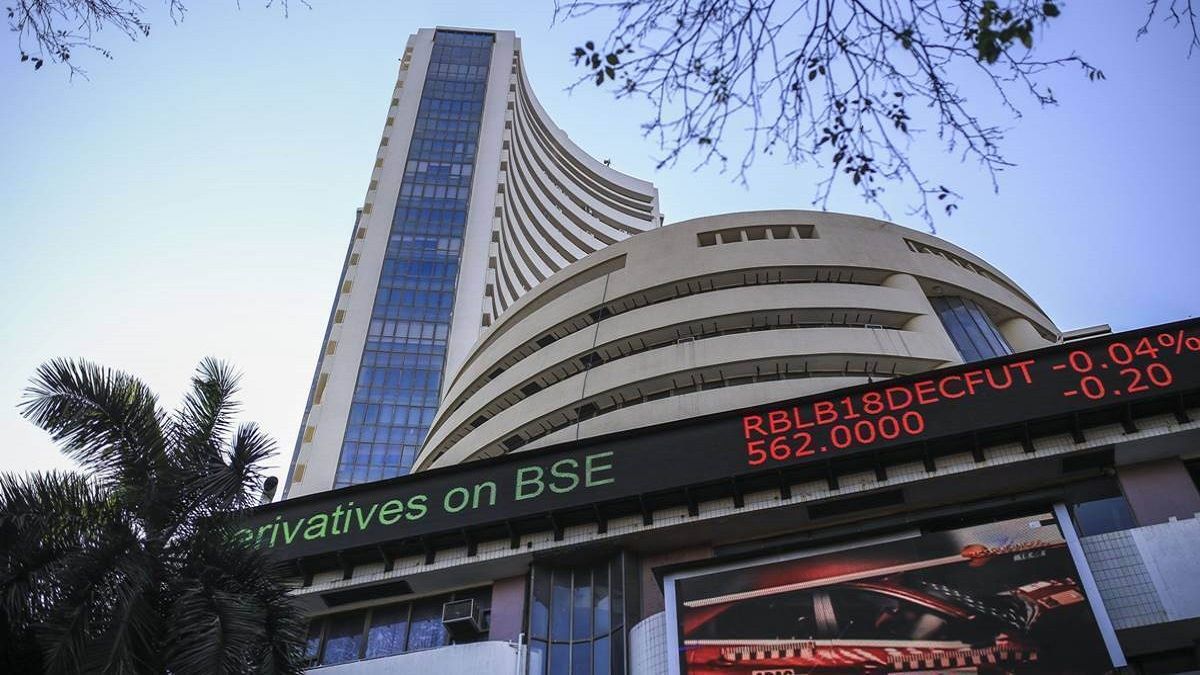Indian equities have seen a significant time correction in the past year and a half. The benchmark BSE Sensex was at 59,106 as of Monday’s close, which is below the levels the gauge was trading at in October 2021.
Has the market, then, become cheaper? Yes, and no.
The valuation differential between India and China has reverted to its traditional mean after the huge 65% outperformance of MSCI China over MSCI India from the end of October 2022 to late January following the China re-opening, according to Jefferies. Nifty’s PE premium to the China H-share index has declined from 208% at the end of October to 115%, in line with the 10-year average of 118%.
Yet, on a relative basis, India is still trading at a premium to most emerging market peers (see table below).

“The challenge, as always in India, remains relatively high valuations. The Nifty index is on 17.4x earnings on a 12-month forward basis, compared with a long-term average of 16.2x since 2008. Nifty earnings are forecast by consensus to grow by 9.7% in FY23 and 20.7% in FY24,” said Christopher Wood, the global head of equity strategy at Jefferies, in a recent note.
“Valuations are primarily a function of potential earnings growth. If the earnings growth slows, valuations are bound to get compressed. That’s what we are seeing now,” said UR Bhat, director, Alphaniti Fintech. “We are still not cheap despite the time correction. While valuations look better now than when we were at 18,400 levels, for the Nifty, we cannot really say we are in an attractive zone yet as the earnings growth numbers have been facing downward pressure.”
Bhat believes that valuations will look attractive if companies regain pricing power and there’s a surge in demand. That is still some time away. At present, corporates are struggling to fully pass on the hike in raw material prices to consumers.
Telecom players, for instance, have been cautious when it comes to price hikes, he said. They are not getting compensated for huge investments in 5G spectrum and related infrastructure with higher ARPUs. Automobile and housing companies have been impacted by higher interest rates as EMIs have gone up, impacting affordability and aggregate demand.
“At around 16x FY25 earnings, the market seems to be somewhere between attractive and reasonable territory. Some pockets of the market are reasonable while some appear attractive,” said Neelesh Surana, chief investment officer, Mirae Asset Investment Managers.
According to him, India now has additional levers of growth in the form of manufacturing exports and new dimension of services exports (other than traditional IT services), which were missing three years back. This puts India on track to achieve a GDP growth trajectory of 6.5-7% in the next few years. In addition, relative valuations compared to other emerging markets have adjusted quite a bit in the last six months.
“Given the expected longevity of growth, higher multiples for India can be justified in a world devoid of growth. If the return expectation is 12-14% from a three-five-year horizon, then the current level of valuations are very supportive,” said Surana.
FPIs have cut exposure to Indian equities materially in the past, and their holdings have fallen to a 10-year low of about 17% at a time when India’s weight in the EM universe has grown and the political risk premium has fallen. India has seen the most outflows among emerging markets in the past 12 months after China and Taiwan.
Domestic flows, however, remain resilient. Net inflows into equity mutual funds rose from Rs 11,000 crore in December to an eight-month high of Rs 18,600 crore in February, after bottoming at Rs 4,200 crore in November last year.
“FPI flows to emerging markets will be sub-normal as long as interest rates in the US do not peak and the risk-off trade continues because of geopolitical issues, involving tensions in Ukraine and Taiwan, and the banking crises. India might be a larger recipient of EM flows in percentage terms, but the EM pool itself is likely to shrink,” said Bhat.
Analysts believe that the first half of CY23 will remain choppy for Indian equities, but the second half may see some recovery if inflation moderates and consumption sees a boost.
“We are closer to the end of the rate-hiking cycle. While the global growth slowdown may impact the earnings outlook, we do not expect it to be very material, given our positive view on domestic economic momentum,” said Jitendra Gohil, director, global investment management, Credit Suisse Wealth Management India, in a recent note.
Gohil prefers sectors that have a high exposure to the domestic economy where the outlook is relatively resilient compared to global markets. This includes banks, cement, autos, multiplexes and defence sectors.
Banks continue to be favourites because they have been successful in protecting their margins and paring NPAs, said Bhat. When interest rate rises, they raise lending rates immediately while most of their deposits continue at legacy rates.
Bhat is also betting on companies in the defence space because of the uptick in orders from the government. Infrastructure orders from EPC companies are at a high as well.
“In our view, value should now be hunted within growth-oriented businesses, many of which have time and/or price corrected. We find ideas across many sectors such as BFSI, consumer discretionary, new-age companies and manufacturing-oriented businesses. Most are now reasonably priced with structural growth prospects,” said Surana.
Besides Fed actions and geopolitical tensions, India’s sensitivity to oil prices remains a key risk, despite the improvement in current account deficit on account of higher services exports.
